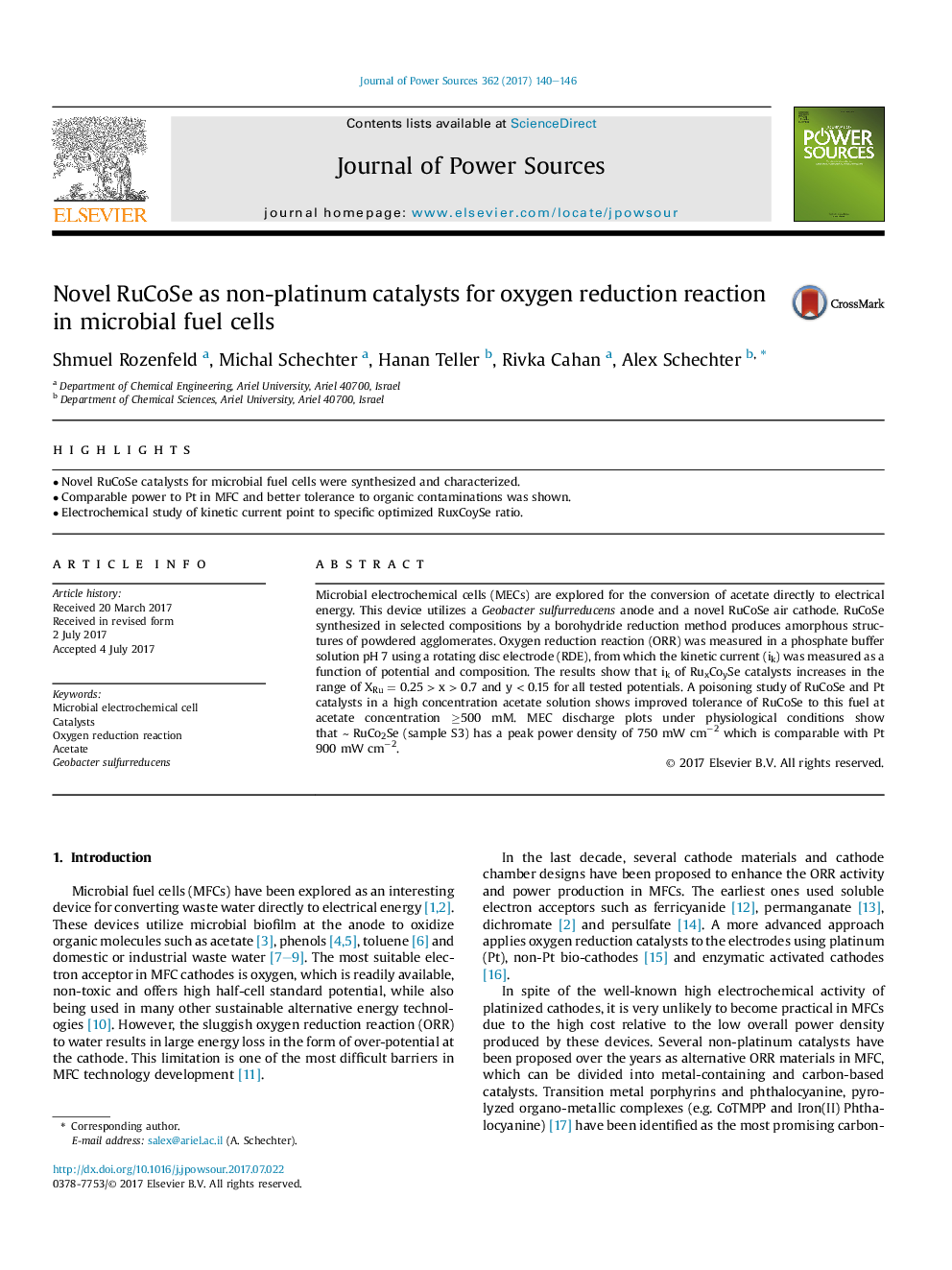| Article ID | Journal | Published Year | Pages | File Type |
|---|---|---|---|---|
| 5148833 | Journal of Power Sources | 2017 | 7 Pages |
Abstract
Microbial electrochemical cells (MECs) are explored for the conversion of acetate directly to electrical energy. This device utilizes a Geobacter sulfurreducens anode and a novel RuCoSe air cathode. RuCoSe synthesized in selected compositions by a borohydride reduction method produces amorphous structures of powdered agglomerates. Oxygen reduction reaction (ORR) was measured in a phosphate buffer solution pH 7 using a rotating disc electrode (RDE), from which the kinetic current (ik) was measured as a function of potential and composition. The results show that ik of RuxCoySe catalysts increases in the range of XRu = 0.25 > x > 0.7 and y < 0.15 for all tested potentials. A poisoning study of RuCoSe and Pt catalysts in a high concentration acetate solution shows improved tolerance of RuCoSe to this fuel at acetate concentration â¥500 mM. MEC discharge plots under physiological conditions show that â¼Â RuCo2Se (sample S3) has a peak power density of 750 mW cmâ2 which is comparable with Pt 900 mW cmâ2.
Keywords
Related Topics
Physical Sciences and Engineering
Chemistry
Electrochemistry
Authors
Shmuel Rozenfeld, Michal Schechter, Hanan Teller, Rivka Cahan, Alex Schechter,
